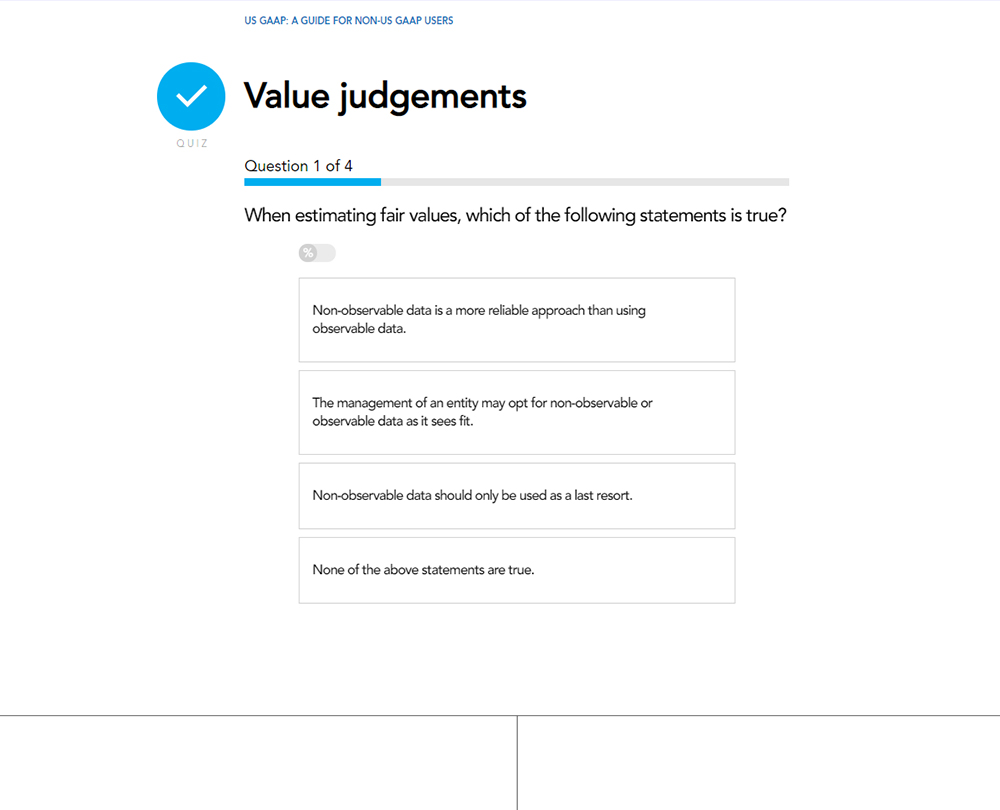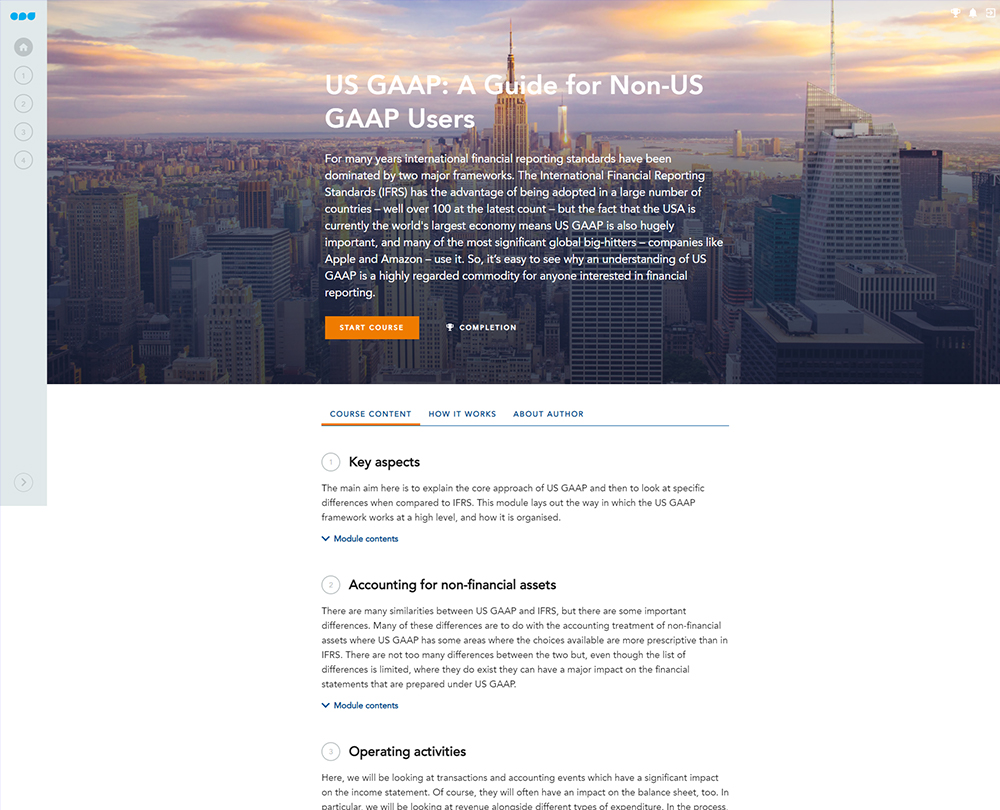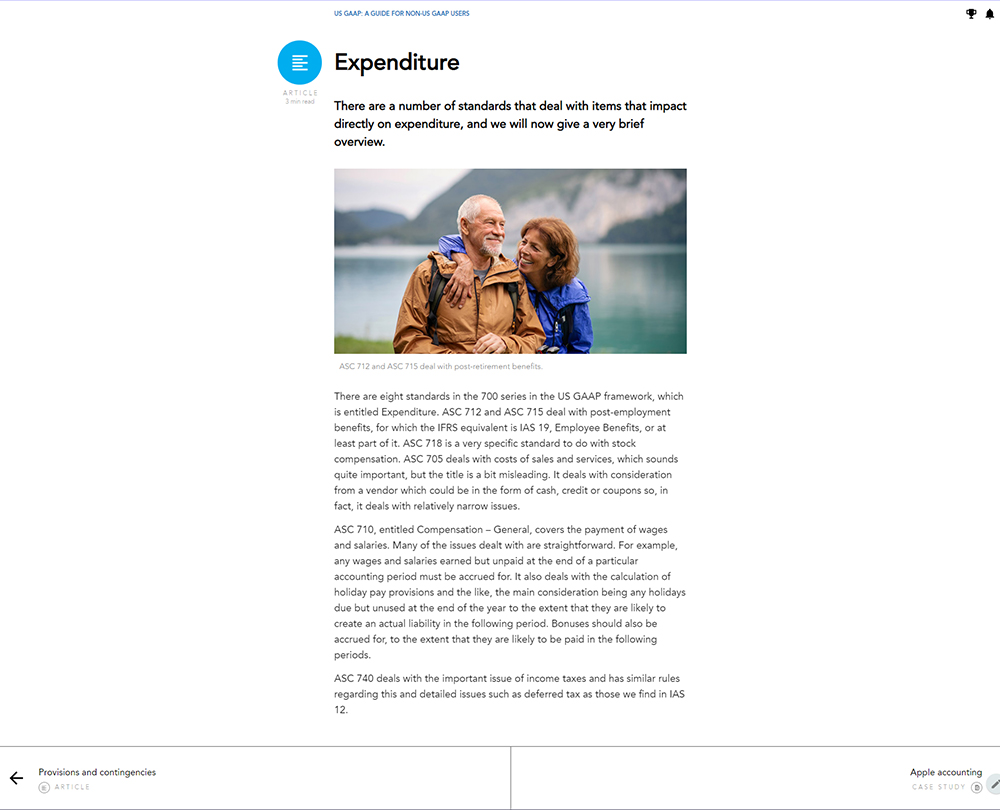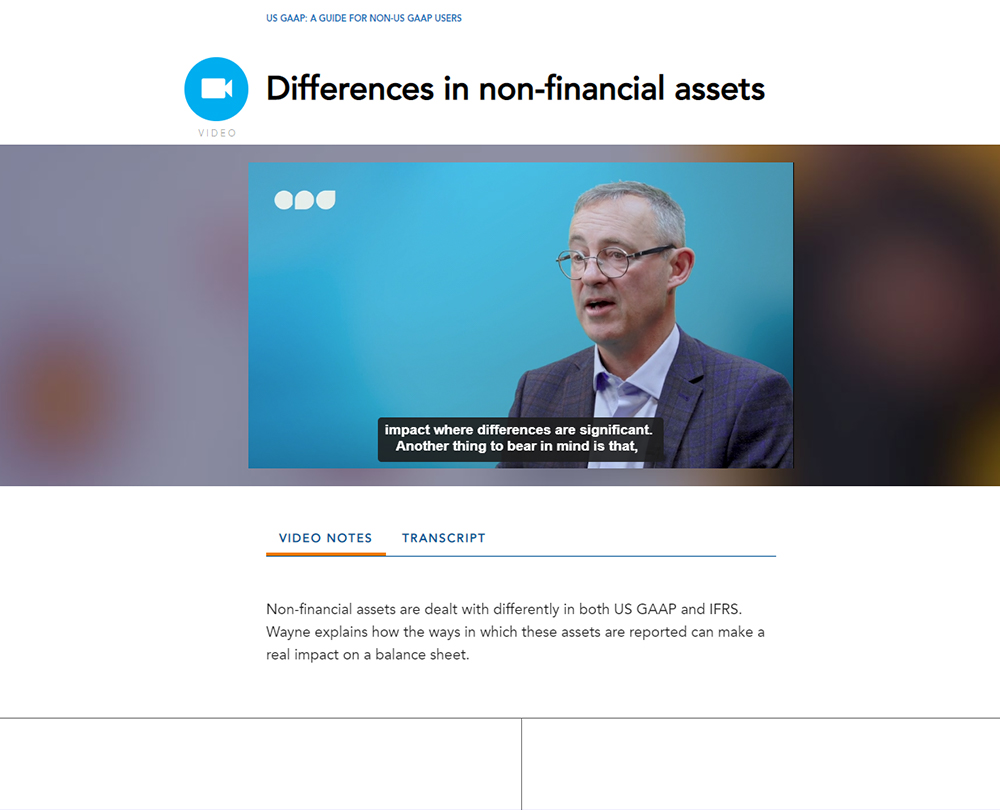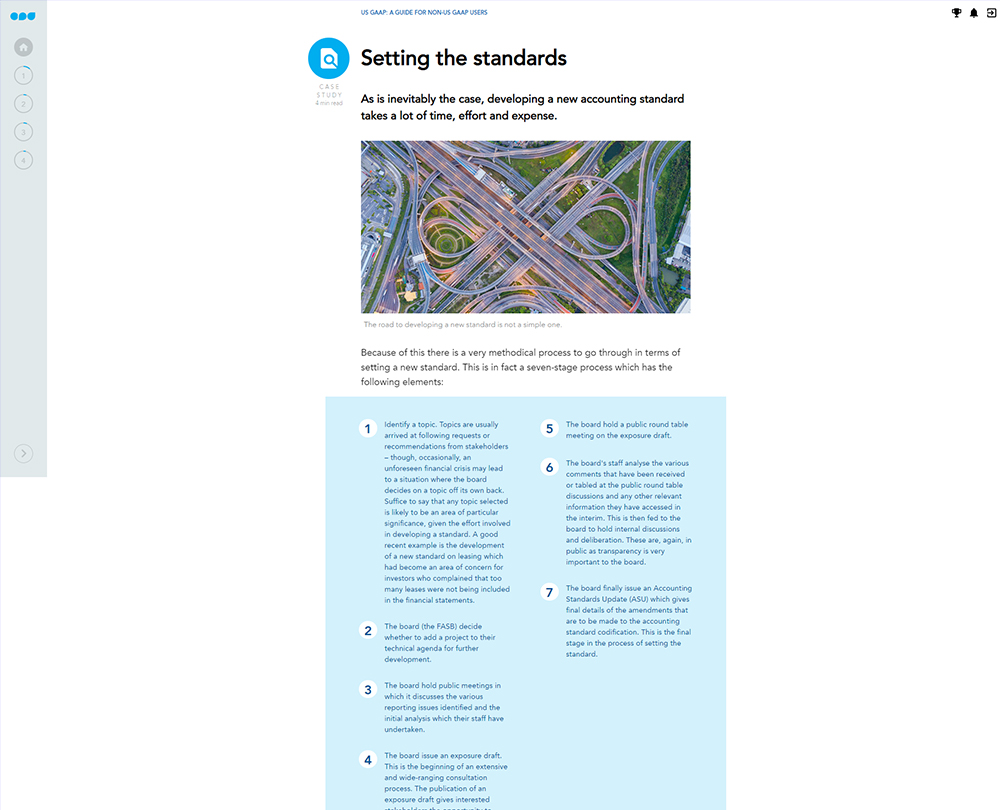US GAAP: A Guide for Non-US GAAP Users
US GAAP is a key area of financial reporting, not only because the USA is the world's largest economy, but it's a framework used by many global corporations. Familiarise yourself with its principles, standards, and its comparisons with IFRS, in this course.
SAVE 30% USING CODE ACPD30
This course will enable you to
- Compare the accounts of companies reporting under different regulatory regimes
- Understand the rules of US GAAP and how they compare to the principles-based IFRS system
- Recognise the differences in the accounting treatment applied to non-financial assets under US GAAP and IFRS
- Appreciate and general similarity of approach accounting for revenue and expenditure under US GAAP and IFRS
- Familiarise yourself with the appropriate standards for accounting for financial instruments and business combinations
About the course
The USA has the world's largest economy and is home to a range of global corporations. Having an understanding of US GAAP and how it compares to IFRS is a must for financial reporting.
Perhaps you report internationally under IFRS but have operations in the USA that also need a US GAAP report. Maybe you compete with companies reporting under US GAAP and need to know how to answer difficult questions about how your IFRS report compares. You could even be an analyst needing to compare the accounts of different companies with different regimes.
This course will provide you with a detailed overview of US GAAP. You'll discover its underlying principles as well as how it compares to the IFRS framework. You’ll become familiar with the processes and standards needed to account for non-financial assets, revenue, financial instruments, and business combinations under US GAAP.
Look inside
Contents
- Key aspects
- The importance of knowing
- Governance arrangements
- Financial statements
- Spot the difference
- The structure
- Industry specific standards
- Convergence
- Accounting for non-financial assets
- Differences in non-financial assets
- Property, plant and equipment
- Accounting for a PPE asset
- Depreciation rules
- Impairment rules
- Differences in intangible assets
- Intangible assets
- Research and development
- Leasing
- Operating activities
- The spirit of cooperation
- Revenue recognition
- Key methodology employed by ASC 606
- Differences in inventory
- Inventory
- Provisions and contingencies
- Expenditure
- Financial instruments and business combinations
- Financial instruments
- More in common than you'd think
- Fair values
- Debt and equity investments
- Impairments and financial instruments
- Business combinations
- Acquisitions
- Goodwill
- Consolidation
- Equity accounting
How it works
Reviews
| Recommended | ||||
Why not upgrade?Find the best way to complete your CPD | CourseNeed just a few unitshourshours? | Pick n MixAll you need for this year's CPD. | LicenceAll you need for this year and more. | TeamKeep your whole team up to date. |
|---|---|---|---|---|
| Access to this course | ||||
| Total CPD unitshourshours | 4 unitshourshours | 21 units20 hours21 hours | 800+ unitshourshours | 800+ unitshourshours |
| Access period | 120 days | 120 days | 12 months | 12+ months |
| Audit-proof CPD completion certificate | ||||
| Immediate access to our entire CPD catalogue | ||||
| Exclusive news and CPD every week plus monthly webinars, all year round | ||||
| Account manager on hand to support your team’s needs | ||||
| Learn more | Learn more | Learn more | ||
Why not upgrade?
Find the best way to complete your CPD
You might also like
Take a look at some of our bestselling courses
SAVE 30% USING CODE ACPD30

